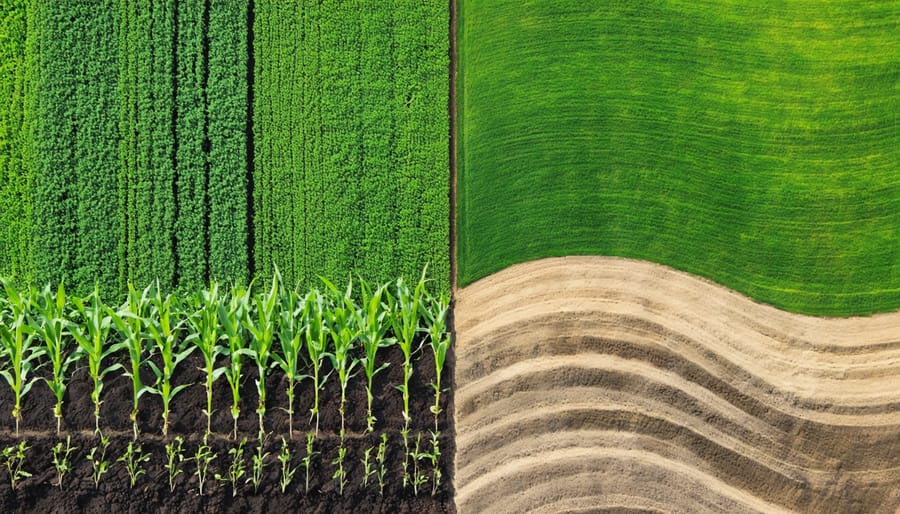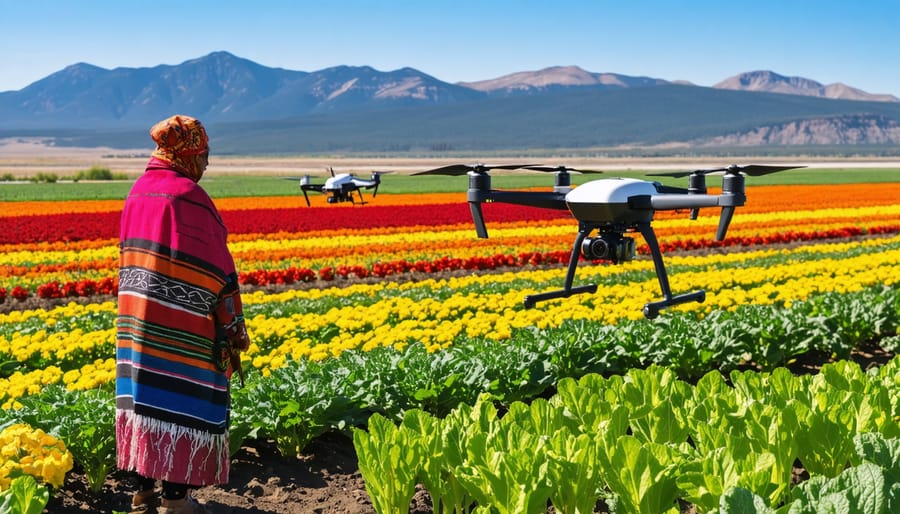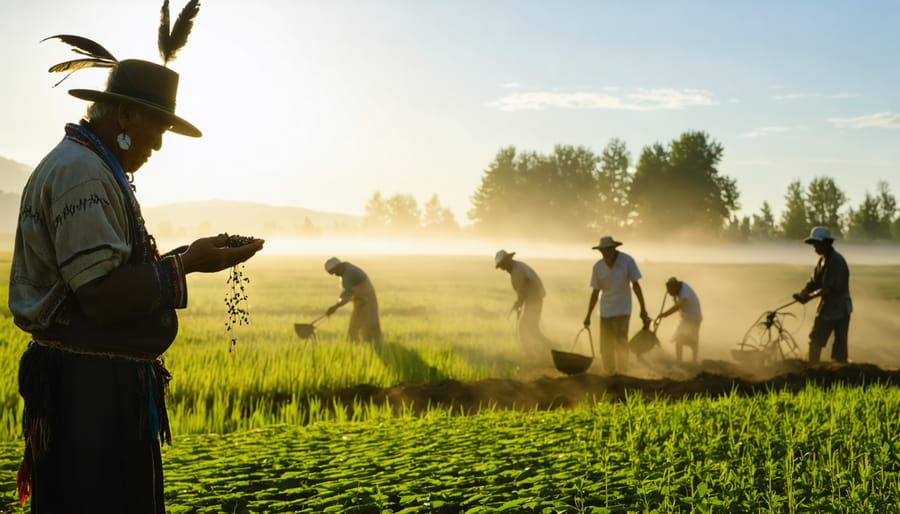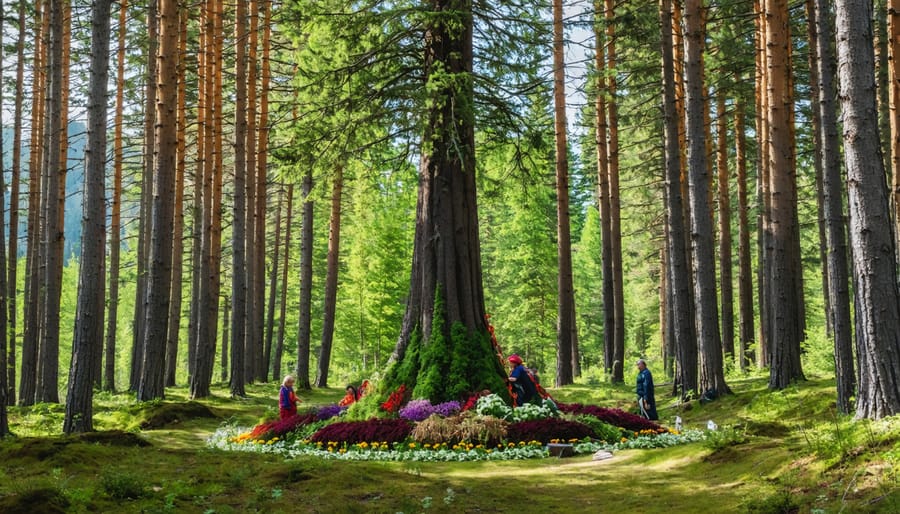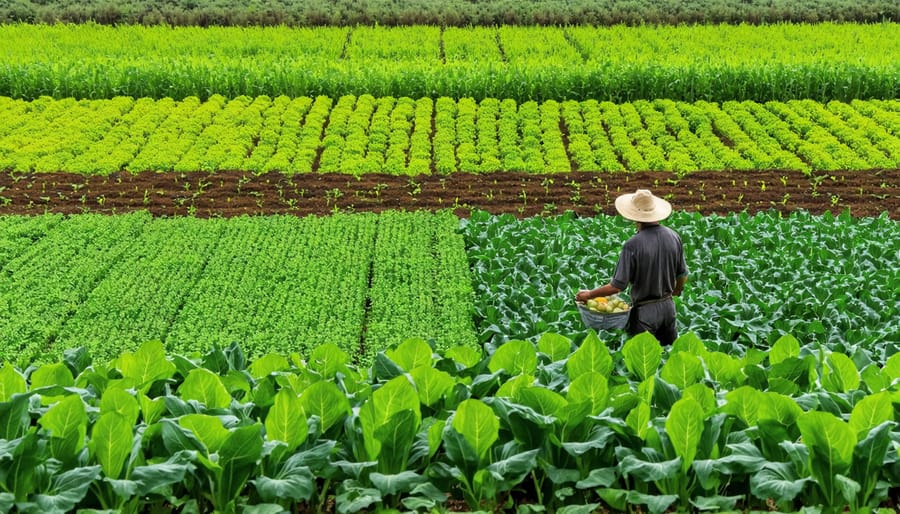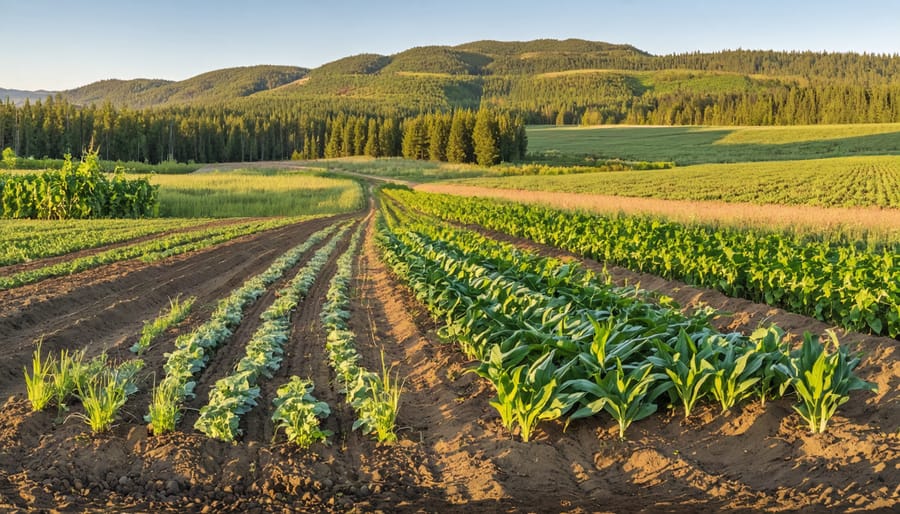Protect your soil’s future by integrating time-tested indigenous permaculture principles with modern conservation techniques. Across Alberta’s diverse landscapes, from Peace Country’s black soils to Southern Alberta’s prairie lands, farmers are revolutionizing their approach to soil management. By combining traditional knowledge with cutting-edge practices, they’re achieving remarkable results: reducing erosion by up to 80%, increasing organic matter content by 2-3% over five years, and significantly improving water retention capacity.
These success stories aren’t just numbers – they represent a growing movement of Canadian farmers who understand that healthy soil is the foundation of sustainable agriculture. Whether you’re managing a thousand-hectare grain operation or a small-scale mixed farm, implementing effective soil conservation techniques isn’t just about preserving land – it’s about building resilience against climate extremes, enhancing productivity, and ensuring our agricultural heritage thrives for generations to come.
This practical guide explores proven soil conservation methods that work specifically in Canadian conditions, combining centuries-old wisdom with modern scientific insights to help you achieve optimal soil health while maintaining profitable production.
Traditional Indigenous Wisdom Meets Modern Farming
The Three Sisters Method
The Three Sisters Method, a time-honored Indigenous agricultural practice, continues to prove its effectiveness in modern Canadian farming. This companion planting technique, developed by Indigenous peoples across North America, combines corn, climbing beans, and squash in a mutually beneficial growing relationship that naturally conserves and enriches soil.
In this system, tall corn stalks provide natural supports for climbing beans, eliminating the need for artificial trellises. The beans, in turn, fix nitrogen in the soil, benefiting all three crops. The large squash leaves spread across the ground, creating a living mulch that reduces soil erosion, maintains moisture, and suppresses weed growth.
Alberta farmer Sarah Thompson, who implemented the Three Sisters Method on her 5-hectare farm near Red Deer, reports significant improvements in soil structure after just two growing seasons. “The soil holds water better, and we’ve noticed increased earthworm activity, which is a clear indicator of soil health,” Thompson shares.
To implement this method effectively in Alberta’s climate, plant corn when soil temperatures reach 15°C, typically in late May. Once corn reaches 15 cm in height, sow pole beans around each stalk. Plant squash between the corn rows two weeks later, spacing plants about 1 metre apart.
This Indigenous technique offers multiple soil conservation benefits:
– Reduced soil erosion through continuous ground cover
– Enhanced soil fertility through natural nitrogen fixation
– Improved soil structure from diverse root systems
– Increased organic matter from plant residue
– Better moisture retention through natural mulching
For optimal results in Alberta’s growing conditions, consider using shorter-season corn varieties and cold-hardy squash varieties that mature within 85-90 days.

Natural Terracing Systems
Natural terracing, a practice deeply rooted in Indigenous wisdom, has been transforming Alberta’s sloping farmlands for generations. This method, which works in harmony with traditional water management techniques, involves creating level platforms along hillsides to prevent soil erosion and maximize water retention.
In the foothills of Alberta, farmers have successfully adapted these ancient practices to modern agriculture. By following the natural contours of the land, terraces are built using local materials like stones and native vegetation. These platforms, typically 3 to 5 metres wide, slow down water movement and capture valuable topsoil that would otherwise wash away during heavy rains or spring thaws.
The Blackfoot and Stoney Nakoda peoples have long understood the importance of working with the land’s natural gradient. Their traditional knowledge teaches us that effective terracing isn’t just about building retaining walls – it’s about understanding how water moves across the landscape and how different soil types respond to various farming practices.
Modern implementations of these systems have shown impressive results. For example, a farm near Cochrane reported a 40% reduction in soil loss after implementing Indigenous-inspired terracing methods. The system also improved moisture retention, leading to more consistent crop yields during dry seasons.
To create an effective terracing system, start by mapping your land’s natural contours and water flow patterns. Work with the slope’s natural features, incorporating existing vegetation and rock formations. Remember that successful terracing is a gradual process that builds upon itself season after season, much like the traditional knowledge that inspired it.
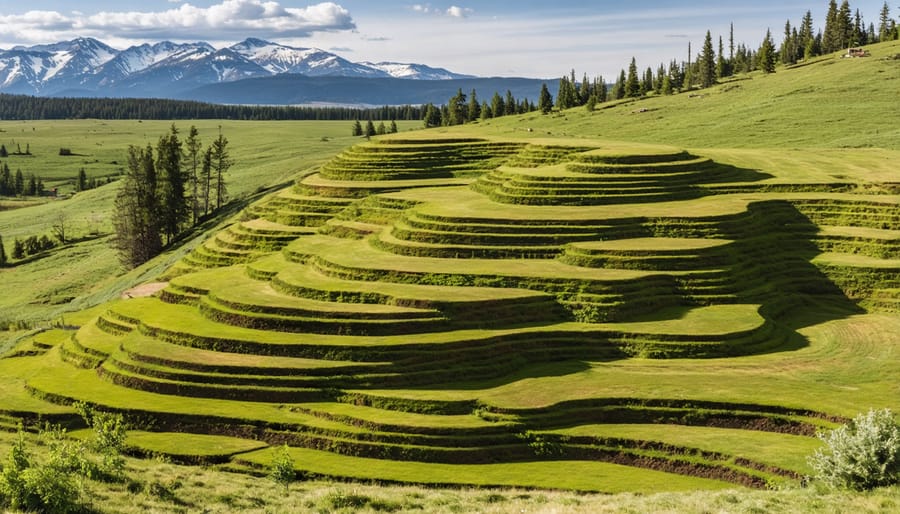
Success Stories from Alberta’s Fields
The Thompson Family Farm Revolution
On their 2,000-hectare farm near Lethbridge, the Thompson family has revolutionized their soil management practices by embracing indigenous agricultural wisdom passed down through generations of Blackfoot people. Sarah Thompson, a third-generation farmer, partnered with local Indigenous elders in 2018 to learn traditional soil conservation methods.
The Thompsons implemented a three-sisters companion planting system, integrating corn, beans, and squash across 200 hectares of their operation. This approach naturally enriches soil nitrogen levels while providing ground cover that reduces erosion. They also adopted traditional crop rotation patterns that include leaving portions of land fallow, enhanced by modern cover crop varieties.
The results have been remarkable. Soil organic matter increased from 2.3% to 4.1% within three years, while water retention improved by 40%. The farm’s biodiversity flourished, with native plant species returning naturally to field edges. Most importantly, crop yields increased by 25% while reducing synthetic fertilizer use by half.
“We’ve learned that combining traditional knowledge with current farming practices creates a more resilient system,” explains Sarah. “Our soil isn’t just healthier – it’s more alive.” The Thompsons now host regular workshops for local farmers, sharing their experience and encouraging others to explore indigenous conservation techniques that have sustained the prairies for centuries.
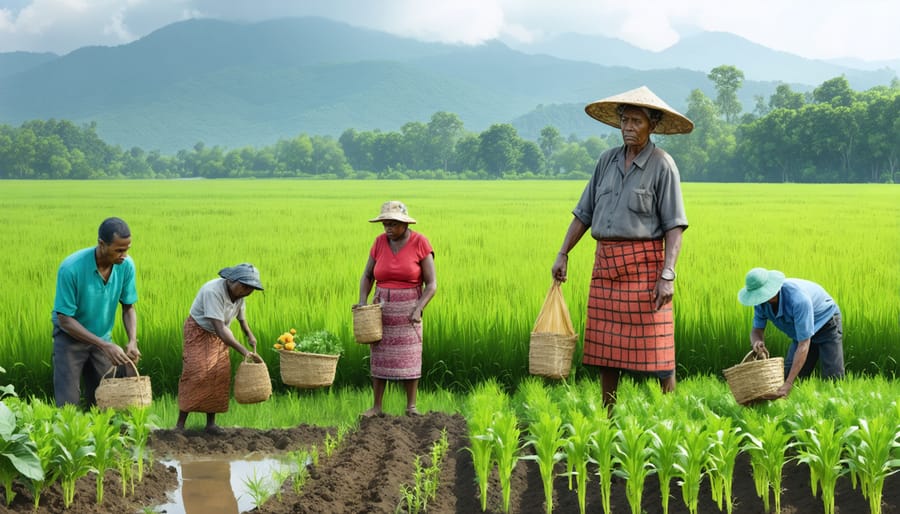
Community Impact: Red Deer Valley Initiative
In the heart of Alberta’s Red Deer Valley, a groundbreaking partnership between Indigenous knowledge keepers from the Blackfoot Nation and local farmers has transformed the region’s approach to soil conservation. The Red Deer Valley Initiative, launched in 2019, combines traditional ecological knowledge with modern farming practices to address soil erosion and enhance soil health.
Elder Sarah Running Wolf, who leads the knowledge-sharing sessions, explains how traditional Three Sisters companion planting techniques have been adapted for large-scale farming operations. “Our ancestors understood the delicate balance between crops, soil, and weather patterns. These principles are just as relevant today,” she shares.
The initiative has already shown promising results across 15 participating farms. Soil organic matter has increased by an average of 2.3% over two growing seasons, while water retention has improved by 30%. Farmers report using 25% less synthetic fertilizer while maintaining comparable yields.
Local farmer Mike Thompson credits the program’s success to its collaborative nature: “Working alongside Indigenous experts has opened our eyes to sustainable practices we hadn’t considered before. Their understanding of local ecosystems is incredible.”
The initiative also includes seasonal workshops where traditional knowledge of crop rotation, natural pest management, and weather pattern recognition is shared with the farming community. This knowledge exchange has created a stronger, more resilient agricultural community while preserving centuries-old wisdom for future generations.
Practical Implementation Guide
Starting Small: First Steps
Beginning your soil conservation journey doesn’t require massive changes or expensive equipment. Start with simple observation – walk your fields regularly and note areas where soil appears to be washing away or where water pools after rain. These observations will guide your initial conservation efforts.
A practical first step is implementing reduced tillage in a small test area, perhaps 1-2 hectares. Many Alberta farmers have found success by starting with their most vulnerable field sections, typically those with slight slopes or lighter soil texture. Consider leaving crop residue on the surface after harvest – even 30% coverage can significantly reduce soil erosion.
Adding cover crops is another approachable technique. Start with hardy options like fall rye or field peas, which perform well in our Alberta climate. Plant these in small sections between your main crop seasons to protect and improve soil structure.
Create windbreaks by planting a single row of native shrubs along field edges. Species like wolf willow and chokecherry are well-adapted to our region and provide excellent wind protection while supporting local wildlife.
Monitor your progress by taking regular soil samples and keeping a simple photo record of your test areas. Connect with local conservation groups or join soil health workshops offered through Alberta Agriculture – learning from experienced neighbours can provide valuable insights as you develop your conservation strategy.
Remember, successful soil conservation is about consistent, small steps rather than dramatic overnight changes. These initial practices will help you build confidence while protecting your soil’s future.
Scaling Up: Advanced Applications
For large-scale operations, implementing soil conservation requires strategic planning and sophisticated technology integration. Modern GPS-guided equipment, combined with indigenous crop rotation methods, enables precise field management across vast acreages. Many Alberta farmers are now using drone technology to monitor soil health and erosion patterns across their fields, allowing for targeted intervention where needed.
Variable-rate technology (VRT) has revolutionized how we apply nutrients and manage soil protection on larger farms. This system adjusts application rates based on soil conditions, reducing waste and protecting vulnerable areas. For operations spanning 1,000 hectares or more, implementing strip-till practices with advanced equipment can maintain soil structure while managing residue effectively.
Successful scaling often involves dividing large properties into management zones based on soil type, slope, and moisture patterns. The Lethbridge Research Centre has demonstrated that this approach, combined with cover cropping, can reduce erosion by up to 80% on large farms. Consider investing in weather monitoring stations across your property to optimize timing for soil management activities.
Remember, scaling up doesn’t always mean more equipment – sometimes it means smarter integration of existing resources. Many successful Alberta operations have found that combining traditional methods with modern technology provides the best results for large-scale soil conservation.
The journey towards effective soil conservation is not just about protecting our land – it’s about securing the future of Canadian agriculture. Throughout Alberta, farmers who have embraced these conservation techniques are reporting remarkable improvements in soil health, crop yields, and operational sustainability. By implementing practices like reduced tillage, cover cropping, and strategic crop rotation, our agricultural community has demonstrated that environmental stewardship and profitable farming can go hand in hand.
The benefits extend far beyond individual farms. Healthy soil contributes to cleaner waterways, improved biodiversity, and enhanced carbon sequestration, making our entire region more resilient to climate challenges. Many Alberta farmers have reported up to 30% reduction in input costs while maintaining or improving yields through these conservation practices.
As we look to the future, the adoption of soil conservation techniques isn’t just an option – it’s an investment in our agricultural heritage. The success stories from fellow farmers across the province show that these methods are both practical and profitable. Whether you’re managing a large-scale operation or a smaller family farm, there’s a soil conservation approach that can work for your land.
Take the first step today by connecting with local agricultural extension services or joining farmer-led conservation groups in your area. Together, we can build a more sustainable and prosperous future for Canadian agriculture, one hectare at a time.

